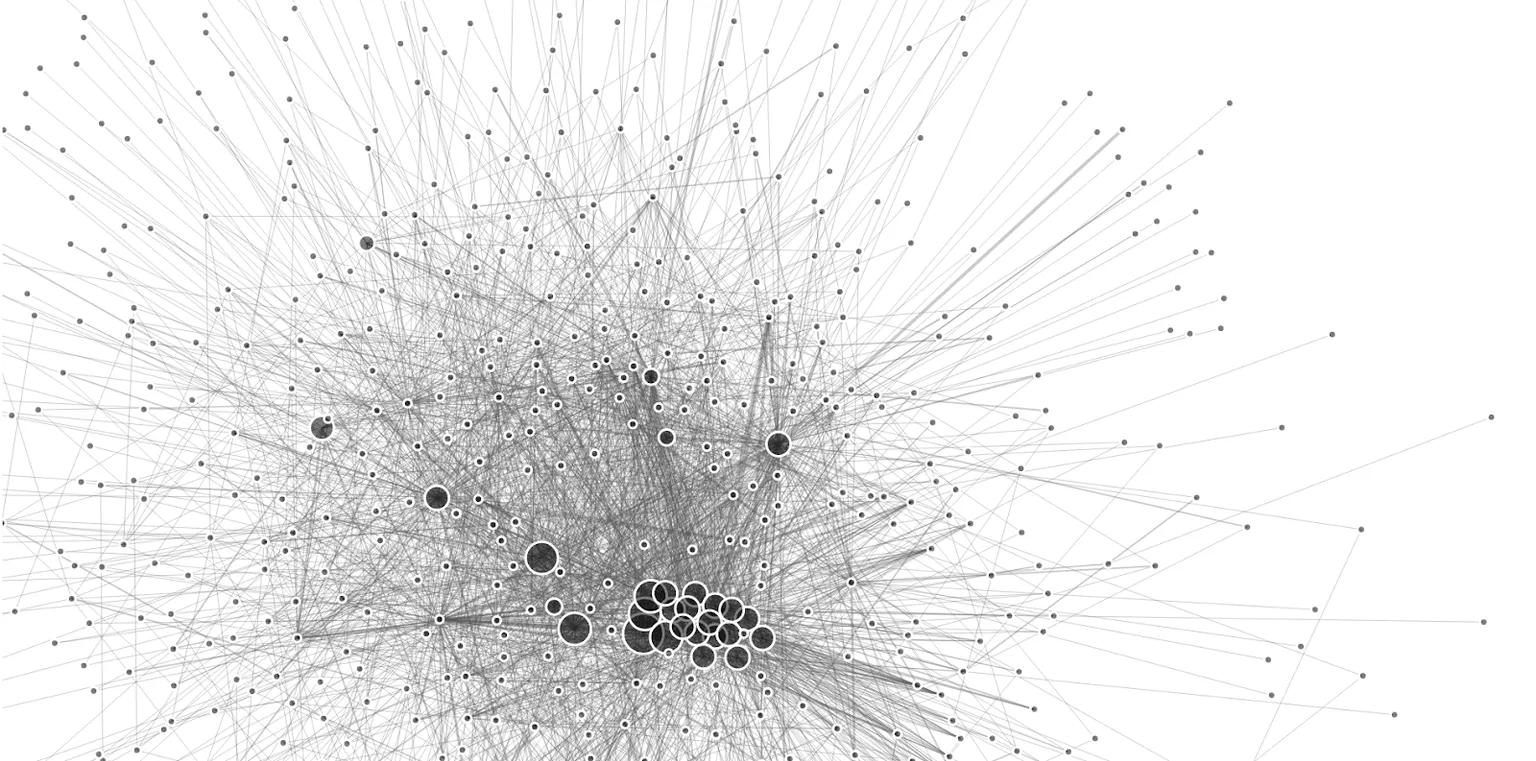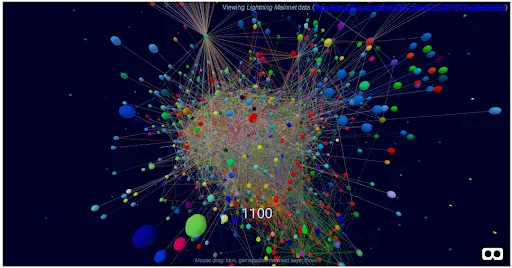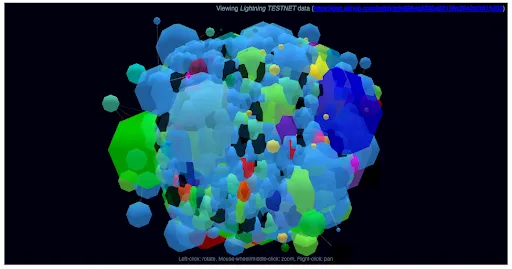Ngamafuphi
- Ngenxa yendlela eyakhiwe ngayo, i-Bitcoin ihlushwa isivinini esincane sokuthenga kanye nezindleko eziphezulu zokuthengiselana.
- I-Lightning Network "isixazululo sesendlalelo sesibili" esisheshisa ukuthengiselana, ngenkathi kunciphisa izindleko, ngokuzulazula i-Bitcoin blockchain eyinhloko.
Bitcoin iye yaphazanyiswa ukuthandwa kwayo. Siyabonga ngendlela blockchain is designed, the speed of transactions is slow and the cost of transactions has increased.
Abacwaningi, abathuthukisi, kanye nomphakathi we-Bitcoin bebezama ukuza nendlela yokuvumela i-Bitcoin-nokunye cryptocurrencies-ukwamukela ukuthengiselana okwengeziwe.
Imizamo yabo emihle kakhulu kuze kube manje igxile entweni ebizwa ngokuthi I-Lightning Network. Can it fix the cryptocurrency’s scaling problems?
Speed and cost
A blockchain has two limitations we need to explain before exploring potential fixes.
Iyokuqala ijubane.
Ku-blockchain, amabhulokhi empeleni angamaqembu emisebenzi eqoqwe ndawonye. Njengengxenye yomklamo we-blockchain, kukhona ukuthengiselana okuningi kuphela okungafakwa kubhulokhi.
Uma okwenzayo kungafiki kubhulokhi yamanje, kujoyina ulayini. Lowo mugqa ungathatha noma yikuphi ukusuka emaminithini ambalwa ukuya osukwini noma ngaphezulu ukuze ucutshungulwe, kuye ngokuthi zingaki ezinye izinkokhelo ezikulayini inkumbulo.
Lokho kukhawulela ukusetshenziswa kwe-blockchain njengendlela yokucubungula okwenziwa ngokushesha, njengokuthenga inkomishi yekhofi. Akekho ofuna ukulinda ukuze inethiwekhi iqinisekise ukuthi unayo imali.
Umkhawulo wesibili uwukuthi izindleko.
Inethiwekhi yeBitcoin, nezinye, zakhelwe phezu kwephrothokholi yokuvumelana ebizwa ubufakazi-of-umsebenzi.
Lapha abavukuzi sebenzisa amandla uzama ukuxazulula iphazili enzima. Ukusiza ukukhokha izindleko zezinto zokusebenza namandla asetshenziswa kuleso sibalo, abavukuzi bakhokhisa imali yokwenziwe.
When the system is small, and the number of transactions that need verifying is few and far between, the network works well and transaction costs are low. As the network grows, however, so do transaction fees, since there is limited space in each newly mined block. As a result, transactions with the highest fees are prioritized for processing when the system faces high usage.
Bitcoin’s scalability challenge became apparent toward the end of 2017 when millions of people jumped on the Bitcoin bandwagon and it wazabalaza ukuze abhekane nakho with the number of transactions. At its peak in December 2017, the average cost to process one transaction on the Bitcoin blockchain—whether the amount was $1 or $1,000—was $37. That made Bitcoin largely uneconomical as a currency. And that’s where the Lightning Network comes in. (We’ve got a whole article explaining more about Ukulinganiselwa kweBitcoin.)
Yini i-Lightning Network?
The Lightning Network is a layer-2 built on top of the Bitcoin network, meaning that it’s built separately from the Bitcoin network but interacts with it. It’s made up of a system of channels that allows people or companies to move money between one another without needing to use the blockchain to verify the transaction.
It bears similarities to the current settlement system used by companies like Visa and Mastercard. When you pay for something, it’s not instantly settled. Instead, there’s a quick verification of funds from the buyer and the request from the seller—giving the green light for a transaction to take place. The actual settlement of funds happens later—in some cases, days or weeks.
The Lightning Network is run by a network of nodes that process payments, and transactions are commonly made using QR codes—instead of complex public keys. In theory, it could allow thousands, or even hundreds of thousands, of transactions to take place instantly, making small transactions economical.
The bottom line is, payments are faster and cheaper.
Ngubani owavela nombono?
I-Lightning Network inomsuka wayo ku imibukiso ngu-Satoshi Nakamoto, umdali ongaziwa we-Bitcoin, kodwa wenziwe waba semthethweni ngabacwaningi uJoseph Poon noThaddeus Dryja, abashicilele incwadi. iphepha elimhlophe about the Lightning Network on January 14, 2016.
They argued that a network of micropayment channels could fix the scalability issues of the Bitcoin network, rather than changing the Bitcoin network itself to allow more transactions.
Lightning Labs, a blockchain engineering lab, helped to launch a beta version of the Lightning Network in March 2018—alongside a host of individuals and other companies including ACINQ and Blockstream. It was initially funded via a $2.5 million seed round, which included notable investor Jack Dorsey (whose company Square has since funded several izibonelelo amaphrojekthi we-Bitcoin kanye ne-Lightning Network). Inguqulo yokuqala ye-Lightning Network yethulwa ku-Bitcoin ngoMashi 2018.
I-Lightning Network yayingumzamo wokuqala wesixazululo esendlalelo sesibili, kodwa abanye balandela.
Isebenza kanjani?
The Lightning Network is faster and cheaper because it skirts the main Bitcoin blockchain.
It has an unstructured network set up around it. Channels are the ad hoc, peer-to-peer connections through which payments are made. Any number of payments can be sent in a channel.
Inethiwekhi inakekelwa ama-node anezinkokhelo zomzila. Ama-Node aqhutshwa abantu bansuku zonke—noma izinhlangano—abasebenzisa uhlelo kumadeskithophu abo, amakhompyutha aphathekayo, noma i-Raspberry Pis. Lokhu kugcina i-Lightning Network ihlukaniswe.
To start using the Lightning Network, any amount of Bitcoin needs to be locked up in a payments channel. Then, it can be spent across the Lightning Network until the channel is closed.
When someone wants to receive a transaction, they create an invoice, a long alphanumeric string of digits—often represented using QR codes. The person who wants to make the payment simply needs to scan this invoice with their Lightning Wallet and confirm (by providing a digital signature) the payment.
When a payment is made, the confirmation is sent across the network to the person who originally made the request. This is known as a peer-to-peer network and means the processing of payments is not reliant on any one party. This typically happens in just a few seconds—hence the name “Lightning.”
Since payments aren’t made on the Bitcoin blockchain, they’re not subject to long wait times and high fees. This means that much smaller payments, or micropayments, can be made for as little as one satoshi (one hundred millionth of a Bitcoin).
Once someone has finished using the network, they can close that channel and exit, and then use their BTC again on the standard Bitcoin network.
Ngiyisebenzisa kanjani?
Ake sithi ufuna ukuhwebelana nesitolo sakho sekhofi sendawo. Okokuqala, uzodinga ukuthumela i-Bitcoin ethile esikhwameni esidinga isiginesha noma izikhiye ezingaphezu kweyodwa ukuze ukhulule izimali.
Lezi zivame ukubizwa ngokuthi multisig wallets. In the case of the Lightning Network, it allows people to enter into an agreement that ensures a payment is received, effectively creating a balance sheet.
Every time you buy a cup of coffee a new balance sheet is created, and you sign it with your public key to reflect what’s left in your wallet as well as what’s in the coffee shop’s wallet.
Uma ungasafuni ukuthenga ikhofi kuleso sitolo sekhofi, ungavala isiteshi, bese ishidi lebhalansi eliwumphumela lizibophezele ku-blockchain njengerekhodi elingunaphakade.
Payment disputes also can be settled by referring to the last signed balance sheet between the two parties.
Kwenzekani uma ungenaso isiteshi esiqondile esinendawo elandelayo ofuna ukuthenga kuyo okuthile? Inethiwekhi izothola umzila omfushane phakathi kwakho nesitolo usebenzisa abanye kunethiwekhi.
Indlela yokuxhuma
Ungakwazi ukuxhuma ku-Lightning Network ngokusebenzisa i-node noma ngokusebenzisa isikhwama sombani. Nazi ukukhetha kwethu okuphezulu:
I-Bitcoin Lightning Wallet ku-Android
Uma ungafuni umuzwa we-node ephelele, ungalanda ifayela I-Bitcoin Lightning Wallet app on your Android phone, which sorts everything out in the background. With this, you can open a Lightning channel and start making transactions with other users. It’s also “non-custodial,” meaning you look after your own keys—keeping your Bitcoin in your hands. (We tried it out by paying for a ukugibela itekisi).
Funda isibuyekezo sethu se- I-Bitcoin Lightning Wallet.
I-Blue Wallet ku-iOS ne-Android
Uma ufuna ukusebenzisa i-Lightning Network kodwa ungafuni ukuzibhekela izimali zakho, I-Blue Wallet iyisevisi yokugcinwa esebenzisa indawo yakho. Ikuvumela ukuthi uthumele futhi wamukele izinkokhelo zombani, kodwa ayikuvumeli ukuthi uhoxise i-Bitcoin yakho ku-Lightning Network.
I-Bitcoin node ephelele
Ukuze uthole ulwazi olugcwele lwe-Lightning Network, ungazama ukusebenzisa i-node egcwele.
So what does this mean? Well, for a start, you’re now supporting the Bitcoin network and the Lightning Network by checking that transactions are legitimate. It also means you can connect it to your computer and make transactions from your own node. This literally makes you your own bank; you are the only person owning and controlling your funds. Scary, huh?
I-Eclair Lightning Node
If you’re feeling more ambitious, you could set up a full Lightning Node. This takes a lot more computer know-how. It means downloading Umbani kukhompyutha yakho—noma i-Raspberry Pi eyenziwe ekhaya—futhi uyisebenzise. Uzobe usuhambisa okwenziwayo kunethiwekhi futhi ungenza okwakho ukuthengiselana.
I-Eclair futhi inikeza inguqulo yeselula yabasebenzisi be-Android ebizwa I-Eclair Mobile. This is a stripped-down Lightning node, which means you stay in control of your Bitcoin. You can connect it to your own Eclair Lightning Node if you’re running one. There’s only one catch: You can’t receive payments. Eclair explains why in lokhu okuthunyelwe kwebhulogi. (TL;DR: It’s safer and easier for them.)
Umbani Joule
Uma ususungule i-node yakho, yini elandelayo? Ingabe unamathele ekusebenziseni uhlelo lokusebenza lwedeskithophu? Umbani Joule is a browser extension that lets you connect your Lightning Node to your browser so that you can easily make payments within Chrome, Firefox, Opera, and Brave. I-hack elula.
Yini ongayenza?
For a start, you can make payments to anyone else who has a Lightning wallet set up. But there’s more to the Lightning Network: As a digital currency, it’s easily integrated into websites without the need for third parties.
Although the vast majority of crypto companies don’t yet accept Lightning transactions, that figure is slowly growing. Nonetheless, a wide range of popular Lightning-capable platforms are currently operating, ranging from cryptocurrency exchanges like Bitfinex and MercuriEX to online retailers and merchants like Bitrefill, plus a wide range of casinos and other service providers.
Uma ufuna indawo ethile yasendaweni, ungase ukwazi ukuthola okuthile eduze Avume umbani noma kwi Lightning Network Stores.
Nazi ezinye izibonelo zezinto ongazenza nge-Lightning Network:
Thola ama-satoshi nge-Lightning Faucet
Ungathola enye i-Bitcoin. Ompompi sekuyisikhathi eside beyindlela yokusabalalisa amanani amancane e-Bitcoin namanye ama-cryptocurrencies, futhi awahlukile nge-Lightning Network. Lokhu I-Faucet yombani lets you test sending and receiving from a Lightning wallet; you can withdraw 14 satoshis at a time, which is just over $0.004.
Cela abantu ku-Satoshis ku-Twitter
Ngabe ufisa ukuthi inkundla yezokuxhumana ibe nomvuzo owengeziwe? Kulungile manje. Ungakwazi ukunikeza abanye abantu ithiphu—futhi bangakunikeza ithiphu—ku-Bitcoin usebenzisa i-Lightning Network. Vele uhlanganise I-Tippin.me, and it puts a little lightning symbol on every tweet.
You will need your own wallet to send tips (see above). All the cool kids are doing it, including Twitter co-founder UJack Dorsey.
How big is the network?
Kunzima ukuqonda okuthile okubandakanya izinkulungwane zezingxenye ezincane, okwenza izigidi zokusebenzelana komunye nomunye. Kufana nokuzama ukuthwebula yonke into eyenzekayo engqondweni yakho. Ngakho-ke, ukwenza lokhu kube lula, sisebenzise inani lemidwebo ebonakalayo. Yile ndlela i-Lightning Network ebukeka ngayo phezulu.
Isisetshenziswa esihle sedatha ye-Lightning Network I-1ML, a search and analysis engine. It provides data on which stores accept Lightning payments and information about current nodes. But it also features a spectacular visualization of the Lightning Network, showing all the nodes and how they are connected to one another. Check it out.


Uma lokho bekungelona i-trippy ngokwanele, nali i- Ukubuka kwe-3D of the Lightning Network you can explore. And if you want to dive even deeper inside the network, you can don VR glasses to get the full experience.


Lokhu ukubuka makes the Lightning Network look like some kind of futuristic planet. This is the view from one person’s node. The larger the areas, the more Bitcoin in the Lightning channels. Interestingly, the large blue area on the right is called “DeutscheTestnetBank,” whomever that might be.


Isimo samanje se-Lightning Network
The Network faced its first major hijack on March 20, 2018, when a ukusatshalaliswa kokunqatshelwa kokuhlaselwa kwesevisi took down around 200 Lightning nodes, about 20% of the network at the time—the network struggled to process transactions. After preventative measures were put in place, it grew to reach a total of 7,000 nodes.
Since then, the Lightning Network has continued to grow. As of July 2023, there are about 16,000 Lightning nodes and over 70,000 channels in operation. The total network capacity of the Lightning Network now sits at 3,815 BTC (or around $113.2 million at current values).
Each Lightning node is responsible for interacting with the others to help transact money, while the channels are essentially the highways that enable money to be moved between nodes on the network. The more nodes and channels there are, the easier it is for larger transactions to complete successfully.
Ikusasa
The popularity of cryptocurrencies and transacting on them has, within just a few short years, put increasing stress on blockchains.
While there have been smaller changes—and in some cases amafoloko—to help networks better cope with demand, the Lightning Network, if successful, could help open the door to widespread adoption of cryptocurrencies and their applications.
Ngo-Agasti 2020, i-Lightning Network yabuyekezwa ukuze ifake ukusekelwa kwe Wumbo function. In the early days of Lightning, the developers limited how much Bitcoin could be kept inside a Lightning payment channel to 0.1677 BTC; Wumbo channels enable nodes to service larger transactions at higher volumes.
A growing number of crypto exchanges now support the Lightning Network, including Kraken, i-OKEx, i-Bitstamp ne-Bitfinex, kanye nohlelo lokusebenza lokuhweba lwezezimali Robinhood. Nokho, ukuhwebelana okukhulu okubili, Binance futhi Coinbase, have yet to introduce support.
And in El Salvador, which in June 2021 passed legislation to yenza i-Bitcoin ithenda esemthethweni, abathengisi usebenzisa i-Lightning Network ukwenza lula izinkokhelo ezincane, kuyilapho isikhwama se-Chivo esixhaswe nguhulumeni sizophinde hlanganisa Lightning Network. Mhlawumbe isibonelo sokuqala se-Bitcoin esisetshenziselwa ukuthengiselana okuvamile kwansuku zonke, kanye "nokuthunyelwa kokuqala kombani ngalesi sikali," ngokusho komsunguli we-AlphaPoint, umthuthukisi osebenza esikhwameni se-Chivo.
Ngo-April 2022, Lightning Labs ikhulise i-$ 70 million ukuxhasa ngezimali ukuthuthukiswa kwephrothokholi ye-Taro, ezosiza ukunika amandla stablecoin ukuthengiselana ku-Lightning Network.
I-Lightning Network isabalala ngale kwe-Bitcoin, futhi. I-Blockstream idale ukuqaliswa kwayo kwe-Lightning Network ebizwa c-Umbani, which is built in the C programming language, familiar to most developers. Litecoin has its own version, too—the Litecoin Lightning Network—which is small compared to the Bitcoin version, but slowly growing.
Ukuze uthole okwengeziwe nge-Lightning Network, hlola ikhasi lezinsiza lika-Jameson Lopp lapha.
Hlala unolwazi lwezindaba ze-crypto, thola izibuyekezo zansuku zonke ebhokisini lakho lokungenayo.
- I-SEO Powered Content & PR Distribution. Khuliswa Namuhla.
- I-PlatoData.Network Vertical Generative Ai. Zinike Amandla. Finyelela Lapha.
- I-PlatoAiStream. I-Web3 Intelligence. Ulwazi Lukhulisiwe. Finyelela Lapha.
- I-PlatoESG. Izimoto / EVs, Ikhabhoni, I-CleanTech, Amandla, Environment, Ilanga, Ukuphathwa Kwemfucuza. Finyelela Lapha.
- I-BlockOffsets. Ukwenza kube yisimanje Ubunikazi be-Environmental Offset. Finyelela Lapha.
- Source: https://decrypt.co/resources/bitcoin-lightning-network



